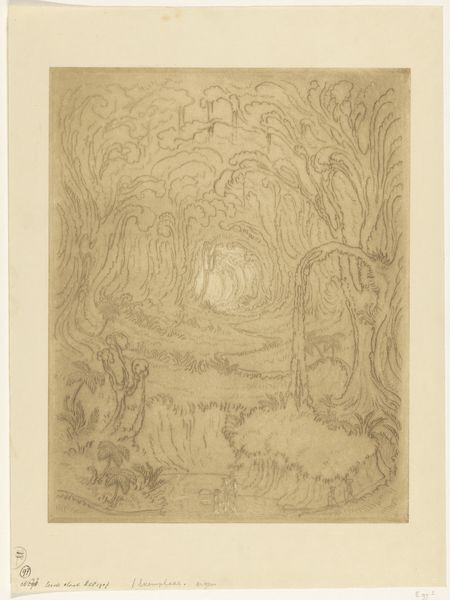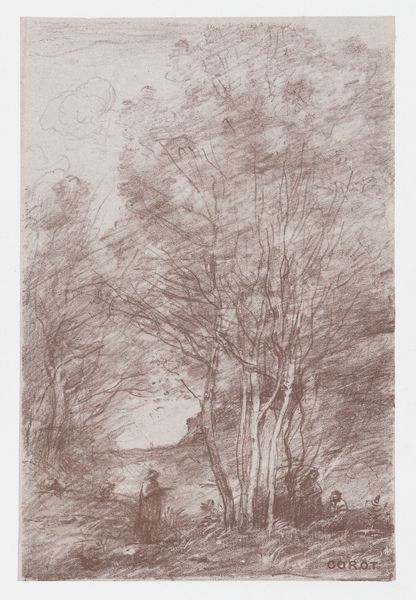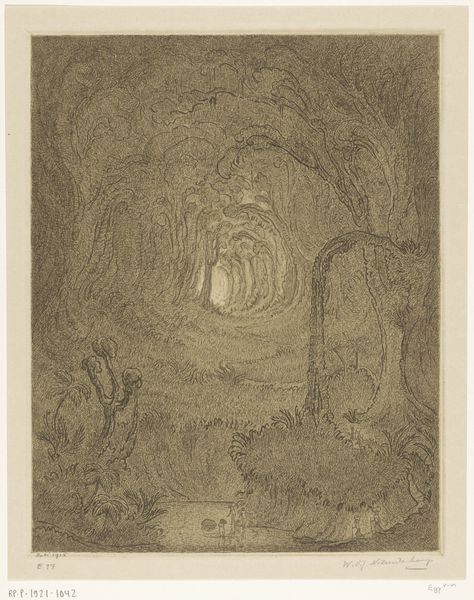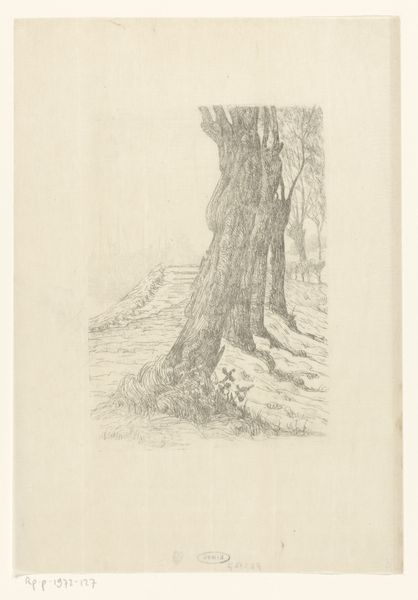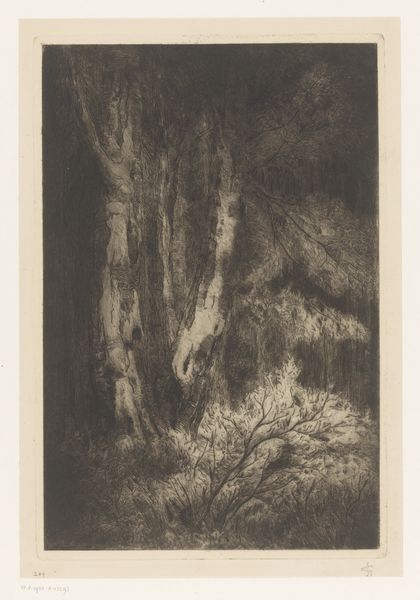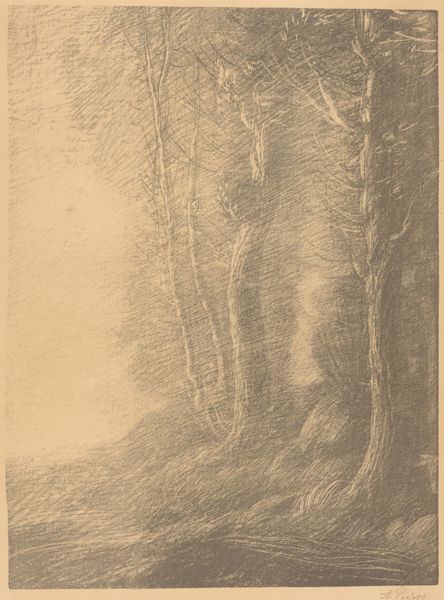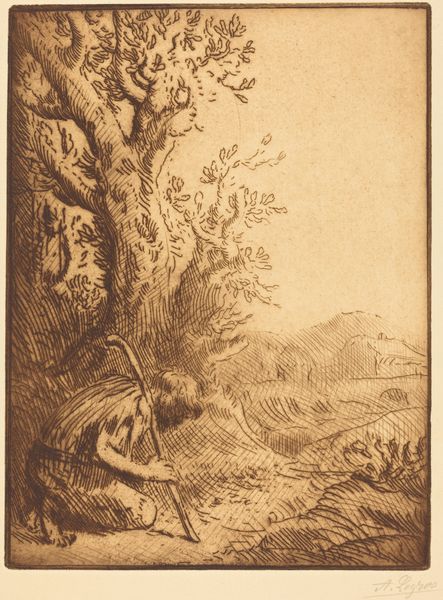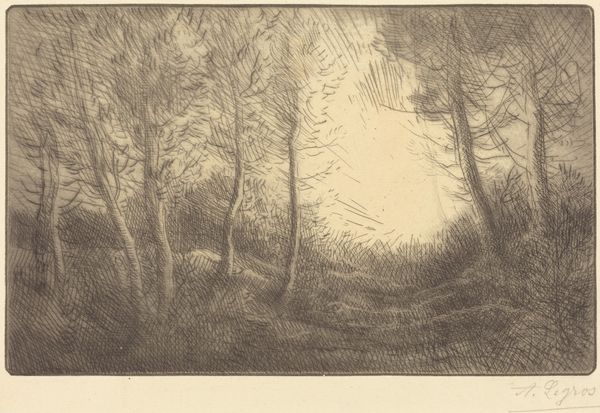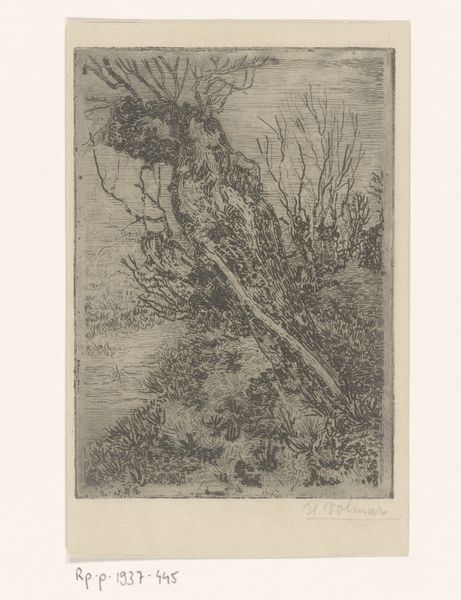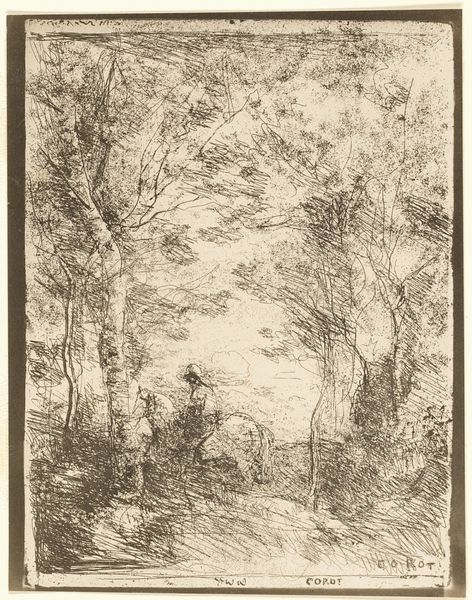
etching
#
etching
#
landscape
#
etching
#
line
#
realism
Dimensions: height 284 mm, width 203 mm
Copyright: Rijks Museum: Open Domain
Curator: Looking at this etching, "Begroeide berghelling op Bali," or "Overgrown Mountain Slope in Bali," likely created between 1911 and 1921 by Wijnand Otto Jan Nieuwenkamp, what strikes you first? Editor: It’s remarkably intricate, almost dreamlike. The density of the foliage, the lone figure...there’s a quiet stillness that draws you in, but also something vaguely unsettling about it. A sort of organized chaos. Curator: Precisely. Nieuwenkamp’s work often explored such themes, capturing the intersection of civilization and the untamed. The composition itself is layered with symbolic resonance. The path winding its way into the vegetation becomes a potent image of human passage through nature's domain. It suggests a physical journey but also perhaps a psychological one. Editor: Interesting, that interplay you mention. To me, this feels deliberately composed, almost stage-like. A person situated like this could represent a number of things: an outsider exploring unfamiliar places; someone who is both isolated and searching. Curator: And Bali, of course, was experiencing significant changes in that period. The growing Dutch colonial presence had begun to create tensions and new socio-economic conditions that many artists tried to reckon with. Nieuwenkamp traveled extensively there, and, in line with prevailing aesthetics of the period, attempted to express the “essence” of the region. I find his dedication to documenting Balinese culture evident in his works from that period. Editor: The figure, deliberately small and almost anonymous, adds to that sense of detachment. Their presence offers scale and, sure, some humanity, but at the expense of getting to actually "know" the culture by understanding individuals. There is almost a distancing or obscuring occurring, maybe that is meant to evoke otherness? Curator: It is impossible to deny that as Western gazes upon Asia go, we should be hyper aware of this power dynamic when experiencing works from that time. Beyond that, it provides a certain drama, don’t you think? Editor: Drama and an ethnographic observation—quite a combination! I am stuck by that balance between intimacy and remoteness in the overall effect of the scene, it really stays with you.
Comments
No comments
Be the first to comment and join the conversation on the ultimate creative platform.
